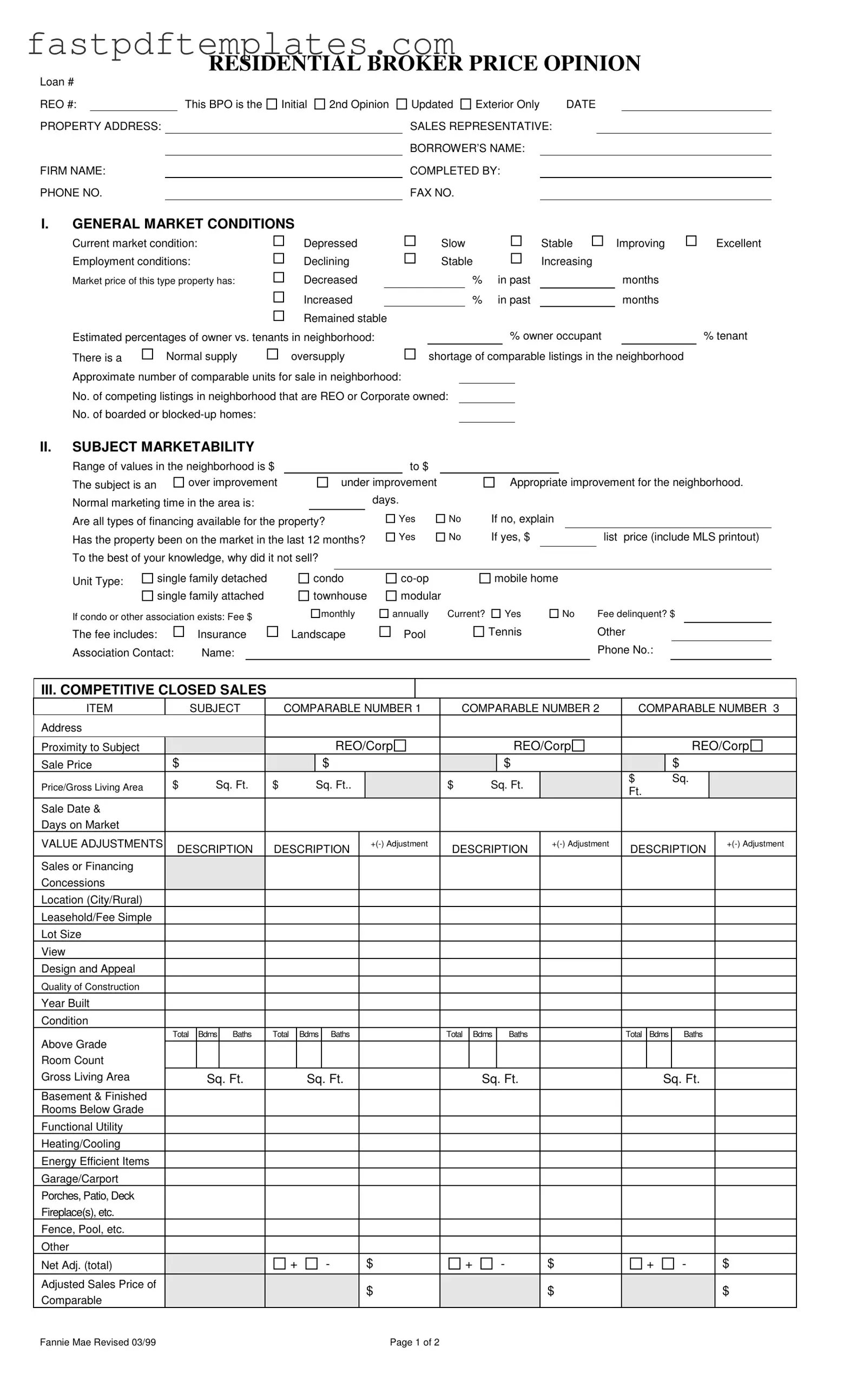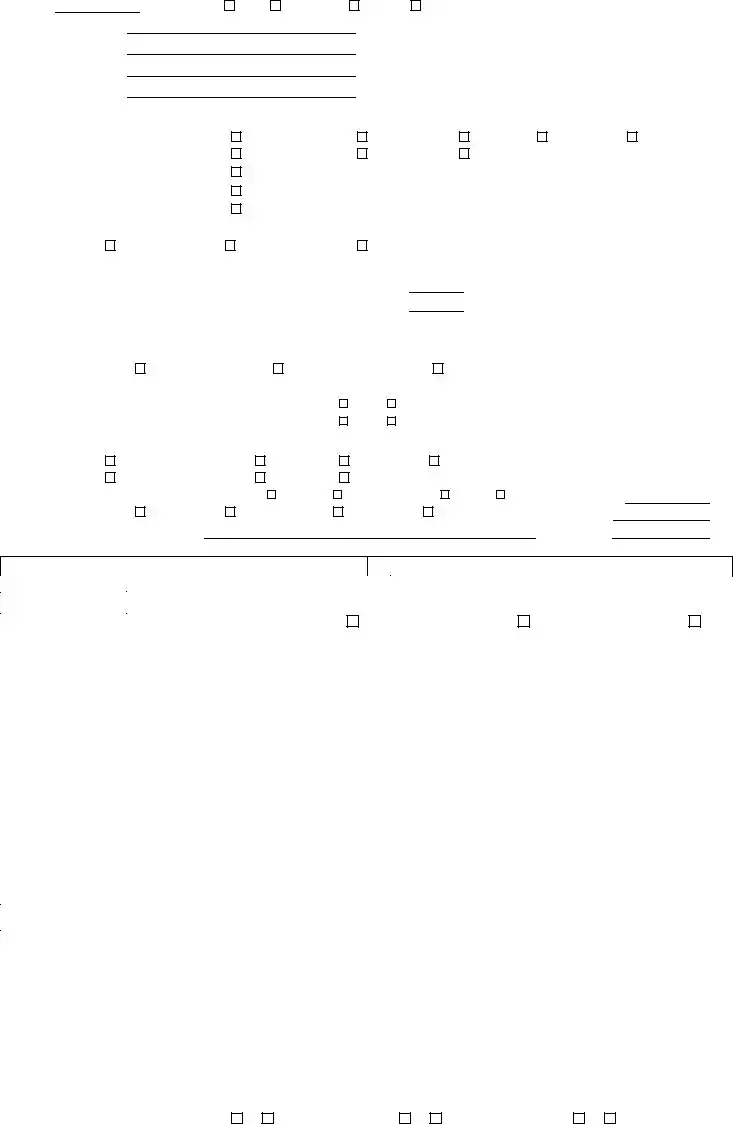The Broker Price Opinion (BPO) form shares similarities with the Comparative Market Analysis (CMA). Both documents aim to estimate a property's value based on comparable sales in the area. A CMA typically provides a broader analysis, including a detailed look at market trends and property features. In contrast, the BPO is often more concise and focused on the specific property in question. While both tools rely on comparable sales data, the CMA may delve deeper into market conditions and provide a more comprehensive overview of the real estate landscape.
The Appraisal Report is another document closely related to the BPO. An appraisal is usually conducted by a licensed appraiser and adheres to strict guidelines and regulations. Like the BPO, it assesses a property's value based on comparable sales. However, appraisals often include more extensive documentation, such as photographs and detailed descriptions of property features. While the BPO may serve as a quicker, less formal assessment, the appraisal is typically required for mortgage lending and carries more weight in legal and financial contexts.
The Property Condition Report (PCR) also aligns with the BPO in its focus on property assessment. The PCR evaluates the physical state of a property, noting any repairs or issues that may affect its marketability. While the BPO primarily estimates value, the PCR provides insights into the condition that may influence that value. Both documents are essential for understanding a property's worth, but they approach the task from different angles—one through valuation and the other through condition assessment.
The Listing Agreement is another document that bears resemblance to the BPO. This agreement outlines the terms under which a property will be marketed and sold. While the BPO provides an opinion on value, the Listing Agreement establishes the framework for how that property will be presented to potential buyers. Both documents are essential in the real estate transaction process, but they serve different purposes: one estimates value, while the other formalizes the marketing strategy.
The Seller's Disclosure Statement is also similar to the BPO in that it provides essential information about a property. This document informs potential buyers of any known issues or defects, which can significantly impact the property's value. While the BPO assesses the market value based on external factors, the Seller's Disclosure focuses on internal conditions. Both documents work together to give a comprehensive view of the property, aiding buyers in making informed decisions.
The Real Estate Purchase Agreement (REPA) complements the BPO by detailing the terms of a sale once a buyer is found. While the BPO provides an estimate of value, the REPA formalizes the transaction, including the price agreed upon by the buyer and seller. Both documents are critical in the real estate process, with the BPO guiding initial pricing and the REPA finalizing the terms of sale.
The Lease Agreement also shares commonalities with the BPO, particularly in rental properties. While the BPO estimates the market value of a property, a Lease Agreement outlines the terms under which a property will be rented. Both documents consider market conditions and property features, but they serve different purposes: one focuses on sale value, while the other governs rental arrangements.
The Title Report is another document that can be compared to the BPO. This report provides information about the ownership and legal status of a property, including any liens or encumbrances. While the BPO estimates market value based on comparable sales, the Title Report ensures that the property is free of legal issues that could affect its value. Both documents are vital in the transaction process, as they help to ensure a clear understanding of the property's standing in the market.
Finally, the Market Analysis Report (MAR) is similar to the BPO in its focus on evaluating market conditions. The MAR offers a broader perspective on market trends, including economic factors that may influence property values. While the BPO provides a specific opinion on a single property, the MAR takes a wider lens to assess the overall market. Both documents are essential tools for real estate professionals, aiding in informed decision-making regarding property transactions.




 Unknown
Unknown
 Investor
Investor